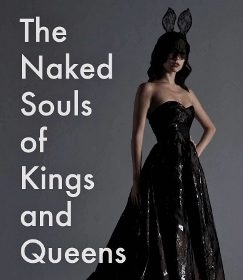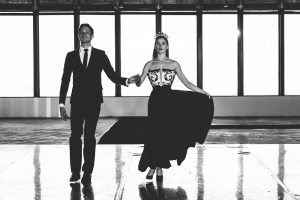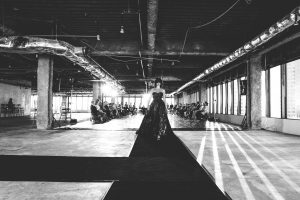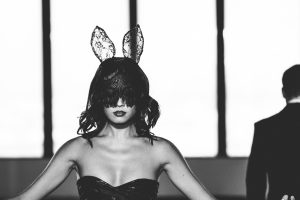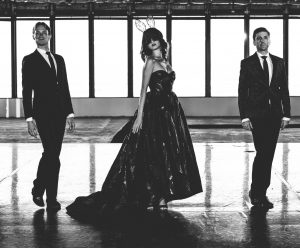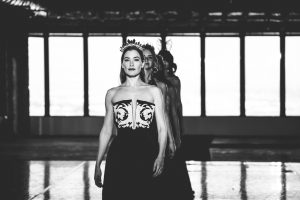ACB’S BEGUILING ABC’S OF BALLET
On the 32nd floor of The BLOC building in downtown LA, a small gathering looks out at a twinkling cityscape through large windows, admiring the scene until a wavering note from a lute draws us back into the room. Three musicians tune Renaissance instruments’”lute, long tabor, and double-reeded curtal (or dulcian)’”as audience members sit on either side of the stage. American Contemporary Ballet (ACB) Artistic Director Lincoln Jones starts the evening with an introduction about 1500s’ dances before bringing out five silent demonstrators dressed head-to-toe in modern designer black, silver and gold. Soon, Jones is interlacing articulate explanations of historical choreography with segments of dancing.
Thus begins the first installation of the company’s latest DANCE+DESIGN series: “The Seven Year History of Ballet.” The plan is to instill viewers with a better appreciation of classical dance by analyzing its development into today’s recognizable patterns of movement. Part I: The Naked Souls of Kings and Queens, which closed last Sunday after a one-weekend, five-performance run, explores ballet’s first manifestation as a derivative of Italian Renaissance routines that range from “Leoncello Vecchio,” a duet for one couple, to a more elaborate iteration of the “Daughter of William,” meant for four.
Artistic Director Jones also hosts the event, presenting each dance while providing information about its significance as a building block for future, complex arrangements. After he breaks down the steps, company members reenact them, paying special attention to components such as movement names and subtle communicative glances between partners. By focusing on minute details, the dances are brought to life not just through their similarities with today’s choreography, but also because of their stark differences. Facial expressions, still important in the world of ballet, have been minimized in comparison to the Renaissance technique, which allowed for a full range of individual expression and variety. And what at first may seem like overly strict hops and skips is actually dance grounded in human emotion. Observing the dance’s motivation plays down the perfectionist qualities associated with ballet in the last 600 or so years, and makes the dancing more relatable and less formulaic.
ACB’s incorporation of design into their presentation primarily comes in the form of Tiger Curran’s costumes. Upon introducing the dancers, Jones remarks that the Renaissance was meant to be a time of high art and fashion, an era when developing an identity became important and valued, which is why learning to dance became a priority for court members. Here, contemporary clothing integrates past and present eras visually by prioritizing mode and aesthetic: There’s a well-tailored suit for Colby Parsons, the only male other than Jones (who participates in a number of scenes as well), and the women wear black embroidered dresses, high heels and long skirts, which dictate their arms’ positions against their body. Those wearing narrower garb draw their hands closer to their waste, while those with wider skirts spread the billowy fabric away from themselves when traveling forward or turning.
Jones initially explains that these dances were meant to move up and down the length of the floor with partners facing straight ahead unless exchanging looks. The black-floor playing area, set between two inward facing rows of chairs, serves to showcase the gentle movements. This design element draws spectators in further to notice subtleties which are not always visible from any one particular seat. Along with authenticity, this style of production gives off the feeling of watching artists on a runway, allowing the viewer to scrutinize their every move.
With a vast amount of research in Borgia and Medici–era routines, Jones choreographed a five-person finale that embodied the strides and expressions discussed during the hour-long program. The company begins in a single file with Parsons stepping forward; the remaining four’”Rochelle Chang, Theresa Farrell, Elise Filo and Amy Helfrich’”quickly follow suit to be by his side, then expand around him into a box-like shape. He takes time making eye contact with a woman in one corner, potentially indicating his interest in her before turning to face and respectfully nod to another. Although the gestures, or movimentos, are delicate, they can be interpreted as those of a group of women trying to capture the attention of a young suitor who is taking his time deciding who he would rather court. The women link and rotate in small circles together after he glides away from them. As these spheres break apart and they stand in a gapped line, Parsons waves his way between them, touching each lady’s hand in two different formations before all are played off by the rich and regal music. The dance’s narrative conclusion remains open.
Jones is onto something, presenting a different side of ballet’”unfamiliar to most’”in a refreshing manner that one wouldn’t expect in a program subtitled “Dances of the 15th Century.” By revealing the very human intentions of those royal souls who danced and choreographed ballet’s origins, Jones and company shed any perception of ballet as an intimidating art form; indeed, investigating ballet’s expansion and evolution actually makes ballet more inviting. It may sound stuffy, but it’s a captivating way to counteract ballet’s stigma as an untouchable high-art exclusive from everyday people. It just makes sense that this would make the art form more accessible to wider audiences.
photos by Anastasia Petukhova
The Naked Souls of Kings and Queens
700 S. Flower St., 32nd Floor
ended on April 30, 2017
for more info and future shows, visit ACB Dances
